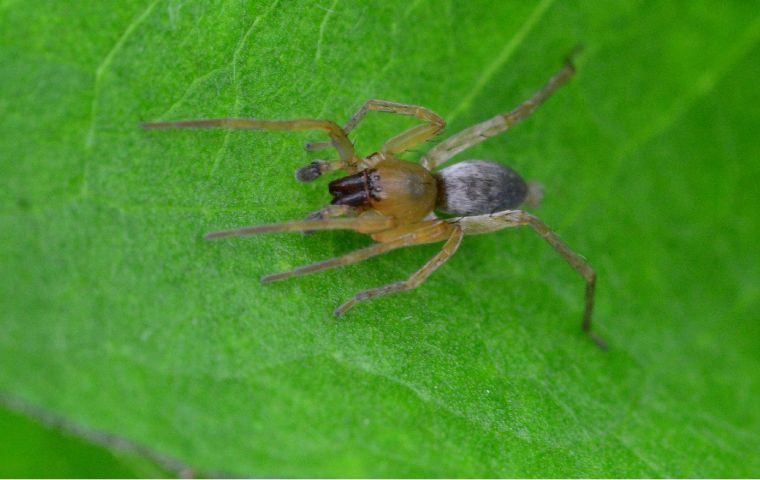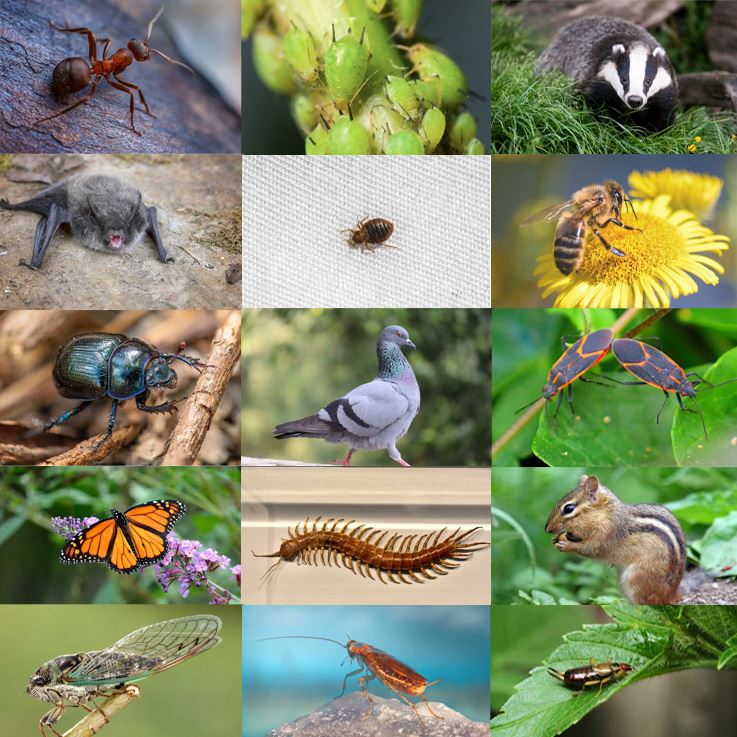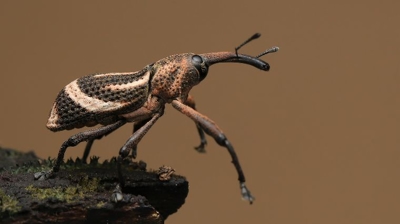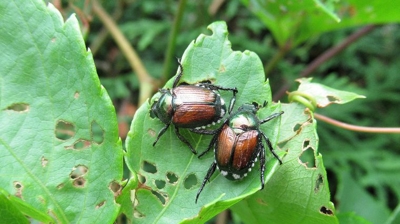
Yellow Sac Spiders
What Are Yellow Sac Spiders?
Yellow sac spiders (Cheiracanthium spp.) are a group of spiders belonging to the family Cheiracanthiidae. They are commonly found in various regions around the world, including North America. These spiders are relatively small, usually ranging from 5 to 10 millimeters in length. Yellow sac spiders get their name from their coloration, which can vary from pale yellow to a light green.
One distinguishing feature of yellow sac spiders is their distinctive, tubular silk sacs, which they create as shelters. These silk sacs are typically found in the corners of walls, behind pictures, or in other concealed areas. Yellow sac spiders are predominantly nocturnal hunters and are known for their agile and fast movements.
Their diet primarily consists of small insects and arthropods, which they capture by actively hunting rather than relying on webs. While they are venomous, their bite is generally considered to be of low medical significance, causing localized pain and irritation in most cases. However, individual reactions to their bites can vary.
Yellow sac spiders are a group of small, nocturnal spiders known for their distinctive silk sacs and active hunting behavior. Although they are venomous, their bites are typically not considered dangerous to humans, causing mild local discomfort in most cases.
Are Yellow Sac Spiders Harmful?
Yellow sac spiders (Cheiracanthium spp.) are generally not considered dangerous to humans, and their bites are usually of low medical significance. However, there are a few ways in which they could be considered potentially problematic:
- Bites: Yellow sac spiders are venomous, and their bites can cause localized pain, redness, swelling, and itching. In some cases, a small blister may form at the bite site. While the symptoms are generally mild and self-limiting, individual reactions can vary, and some people may experience more pronounced discomfort.
- Allergic Reactions: Although rare, some individuals may be allergic to spider venom, and their reactions can be more severe. Allergic reactions may include extensive swelling, rash, and, in very rare cases, systemic symptoms like nausea, fever, or muscle pain.
- Secondary Infections: Scratching the bite site can lead to secondary infections, which can be a concern if the bite becomes itchy and uncomfortable.
- Misidentification: Yellow sac spiders are sometimes mistaken for other more medically significant spiders, like brown recluse spiders. Misidentifying a spider can lead to unnecessary concern and medical treatment.
Yellow sac spiders are not aggressive toward humans and will typically bite only if they feel threatened. To avoid potential encounters with these spiders and reduce the risk of bites:
- Shake out clothing and shoes before wearing them, especially if they've been stored in areas where yellow sac spiders are common.
- Be cautious when reaching into hidden or outdoor spaces where these spiders may build their silk sacs.
- Keep your home well-maintained to reduce potential hiding places for spiders.
- If you find a yellow sac spider in your home, consider safely relocating it rather than killing it.
If you are bitten by a spider and experience severe or unusual symptoms, or if you suspect you've been bitten by a venomous spider, it's advisable to seek medical attention for proper evaluation and treatment.
Yellow Sac Spider Appearance
Yellow sac spiders (Cheiracanthium spp.) are relatively small arachnids, typically measuring between 5 to 10 millimeters in length. Their appearance can vary slightly depending on the exact species and individual variations, but there are some common characteristics to help identify them:
- Color: As the name suggests, they are usually pale yellow to light green in color. The exact shade can vary, but their overall appearance is typically a yellowish or greenish hue.
- Body: Yellow sac spiders have elongated bodies with two distinct body regions – the cephalothorax (front part) and the abdomen (rear part). The cephalothorax is slightly darker than the abdomen, and it may have some subtle markings.
- Legs: They have eight long, slender legs that are typically a similar color to their body. The legs are often covered in fine hairs.
- Eyes: Most yellow sac spiders have eight eyes arranged in two rows. The arrangement of the eyes can be helpful in distinguishing them from other spider species.
- Silk Sac: One of the distinctive features of yellow sac spiders is the silk sacs they construct as shelters. These sacs are tubular and typically found in corners, crevices, or hidden areas.
While these are general characteristics of yellow sac spiders, there can be variations within the species. Identifying spiders accurately often requires close observation and, in some cases, expert knowledge or microscopic examination.
Yellow Sac Spider Habitat
Yellow sac spiders (Cheiracanthium spp.) can be found in various habitats across the world, particularly in North America. They tend to prefer specific locations and environments, and you might encounter them in the following places:
- Indoors: Yellow sac spiders are known for being adaptable and are often found inside buildings. They create silk sacs in corners, behind pictures, in wall crevices, and other concealed areas. They may also wander in search of prey, which can bring them into your home.
- Outdoors: These spiders are not limited to indoor environments. Outdoors, you can find them in gardens, shrubs, and bushes. They often build their sacs on leaves, grass, and other vegetation.
- Garages and Sheds: Yellow sac spiders can commonly be found in garages, sheds, and other structures where there is a combination of indoor and outdoor environments.
- Woodpiles: They might reside in and around woodpiles, as these provide both shelter and a source of insects for them to prey on.
- Grasslands and Fields: In natural outdoor environments, yellow sac spiders can be present in grasslands and fields, especially in areas where there is an abundance of small insects for them to hunt.
- Under Rocks and Logs: In more rural or forested areas, you may find yellow sac spiders under rocks and logs where they build their sacs for shelter.
- Under Leaves: They sometimes construct their silk sacs under leaves, especially in garden settings.
Yellow sac spiders are adaptable and can thrive in a variety of conditions. While they are not aggressive and typically prefer to avoid contact with humans, you may encounter them in and around your home, especially during the warmer months when they are more active.
Yellow Sac Spider Diet
Yellow sac spiders (Cheiracanthium spp.) are carnivorous and primarily feed on a variety of small insects and arthropods. Their diet consists of the following types of prey:
- Small Insects: Yellow sac spiders are efficient hunters and commonly feed on small insects like flies, mosquitoes, ants, aphids, and various other tiny bugs. They actively stalk and capture these insects.
- Other Arachnids: They may also consume other small spiders and arachnids when the opportunity arises.
- Thrips: Thrips are slender, minute insects, and yellow sac spiders are known to prey on them.
- Mites: These spiders will eat mites if they encounter them.
- Occasional Larger Prey: While their primary diet consists of smaller insects, yellow sac spiders have been observed capturing and consuming larger prey items, such as caterpillars and grasshoppers.
- Other Spiders: Some yellow sac spider species have been observed cannibalizing other members of their own species, particularly during territorial disputes or when in close proximity to each other.
Yellow sac spiders are active hunters, and they do not rely on webs to catch their prey. Instead, they use their silk for constructing retreats and egg sacs. They are known for their agile and rapid movements when capturing prey. Their diet primarily consists of readily available, smaller insects and arthropods in their immediate environment.

Yellow Sac Spider Life Cycle
The life cycle of yellow sac spiders (Cheiracanthium spp.) is similar to that of many other spiders and typically involves several stages:
- Egg Stage: The life cycle begins with the female spider laying eggs. She typically deposits her eggs inside a silk sac, which she attaches to a surface. The number of eggs can vary but often ranges from dozens to hundreds. The female guards the sac, protecting it until the eggs hatch.
- Spiderling Stage: When the eggs hatch, spiderlings emerge. They are tiny and undergo several molts as they grow. During this stage, they disperse from the sac and begin hunting for small insects and prey. As they grow, their exoskeletons become too small, and they shed these outer layers in a process called molting.
- Juvenile Stage: After several molts, the spiderlings develop into juveniles. At this stage, they resemble miniature adults in terms of body shape and coloration. They continue to hunt and grow.
- Adult Stage: Yellow sac spiders reach maturity as adults, which can take several months. The time it takes to reach adulthood can vary depending on factors such as temperature, food availability, and environmental conditions. Adult yellow sac spiders are capable of reproduction.
- Reproduction: Yellow sac spiders reproduce sexually. The male typically constructs a small silk structure, deposits sperm onto it, and then transfers the sperm to specialized structures on his pedipalps (the small appendages near the mouth). The male then seeks out a receptive female and transfers the sperm during mating. The female stores the sperm for fertilizing her eggs later.
- Senescence and Repetition: After mating, the females may lay multiple egg sacs during their lifetime, repeating the cycle. The lifespan of yellow sac spiders can vary, but it's typically about one year.
The specifics of the life cycle can vary between different species of yellow sac spiders and can also be influenced by environmental factors such as temperature and food availability. The life cycle typically revolves around survival, growth, and reproduction, with the goal of ensuring the next generation's success.

Hear From Our Happy Customers
-
"Very Knowledgeable"
The tech that arrived was courteous, professional, and very knowledgeable. He was Great.
- Uerial I. -
"Great Communication"
Tech was on time, communication was great, and he accommodated my needs.
- Alonzo W. -
"Fantastic & Patient"
Jarvis was fantastic and patient. He answered my questions with an in-depth explanation and addressed all of my areas of concern. Would love for him to be my assigned tech going forward. Well done!
- Yonnette M. -
"Wonderful Service"
Wonderful service. Jarvis is great. Took care of everything I needed. Thank you!
- Henry P. -
"Exceeds Expectations"
I can’t say enough positive things about this company... The tech that came out, Jarvis went above and beyond my expectations. Thank you guys, I will continue using your services.
- Jake M. -
"Professional & Considerate"
I’m pleased with Miche services. Jarvis came today. Professional and considerate. Thank you!
- Judy B.



